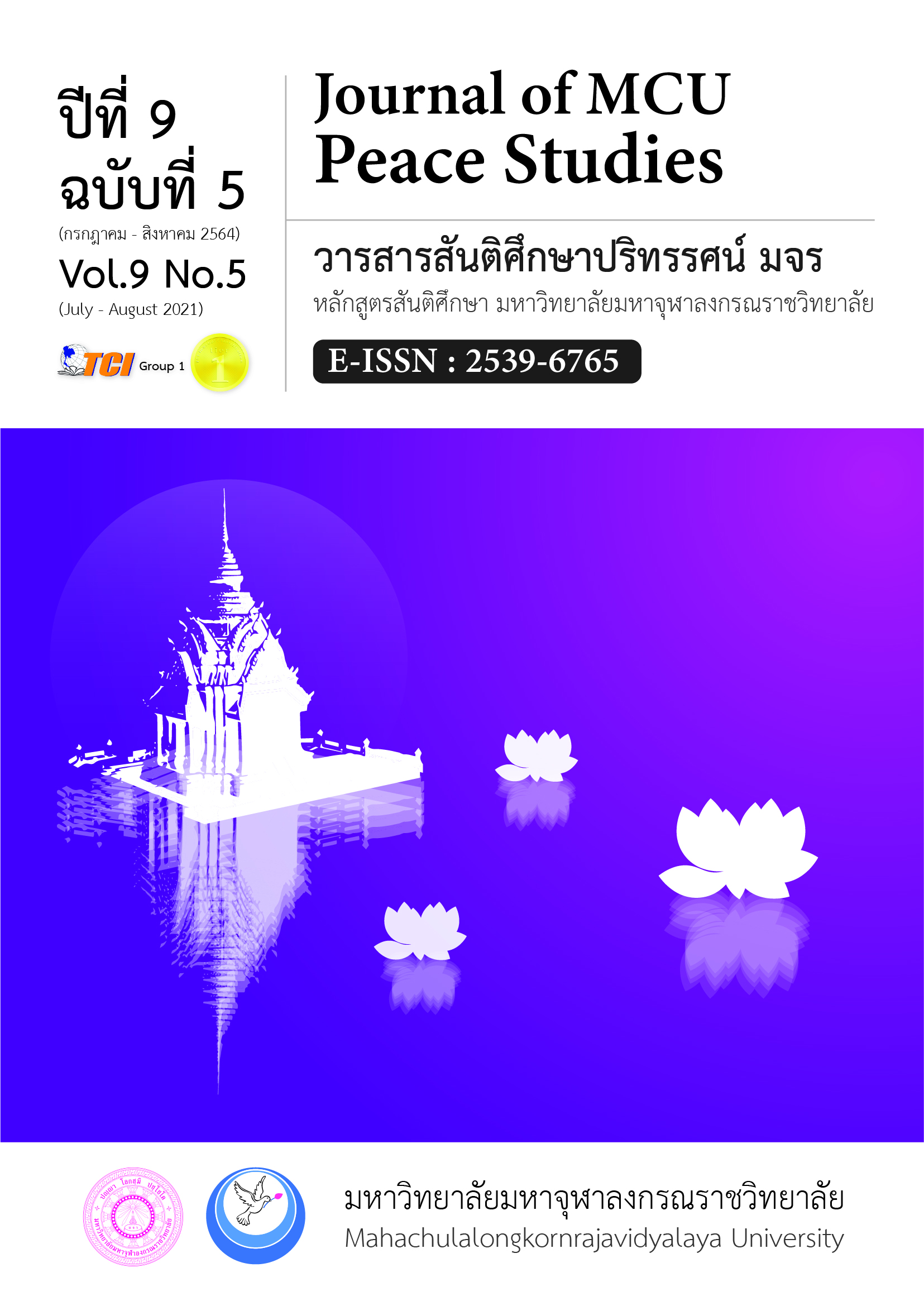การพัฒนานวัตกรรมชุดหนังสือหลายระดับ เพื่อส่งเสริมความสามารถทางการอ่านสำหรับนักเรียน ระดับชั้นประถมศึกษาปีที่ 3 ที่มีความต้องการหลากหลาย
Main Article Content
บทคัดย่อ
บทความวิจัยนี้มีวัตถุประสงค์ 1) เพื่อศึกษาสภาพปัญหาความสามารถด้านการอ่านของนักเรียนระดับ ชั้นประถมศึกษาปีที่ 3 และแนวทางการจัดทำชุดหนังสือหลายระดับ 2) เพื่อสร้างและตรวจสอบคุณภาพนวัตกรรมชุดหนังสือหลายระดับ เพื่อส่งเสริมความสามารถทางการอ่านสำหรับนักเรียนระดับชั้นประถมศึกษาปีที่ 3 ให้มีประสิทธิภาพตามเกณฑ์ 75/75 เป็นงานวิจัยประเภท วิจัยและพัฒนา กลุ่มเป้าหมาย นักเรียนระดับชั้นประถมศึกษาปีที่ 3 โรงเรียนสัมมาชีวศิลป ในสังกัด สช. กรุงเทพมหานคร จำนวน 12 คน และครูภาษาไทย 1 คน โดยการเลือกแบบเจาะจง เครื่องมือการวิจัยคือ แบบบันทึกข้อมูลการศึกษา แบบประเมินลำดับเรื่องของนิทาน, แบบประเมินนวัตกรรมชุดหนังสือหลายระดับ, ชุดหนังสือหลายระดับ 12 เรื่อง คู่มือ การใช้นวัตกรรมชุดหนังสือหลายระดับ และแบบทดสอบการอ่าน การวิเคราะห์ข้อมูลโดยการวิเคราะห์เนื้อหา, การหาค่าเฉลี่ย, ส่วนเบี่ยงเบนมาตรฐาน, ค่าความเชื่อมั่น, ค่าอำนาจจำแนก, ค่าความยากง่าย และการหาประสิทธิภาพ E1 / E2 ผลการวิจัยพบว่า 1) นักเรียนชั้นประถมศึกษาปีที่ 3 สังกัดสำนักงานคณะกรรมการส่งเสริมการศึกษาเอกชน กรุงเทพมหานคร โรงเรียนขนาดเล็ก และขนาดกลางที่มีผลคะแนนการสอบ NT ปี 2561 ต่ำกว่าร้อยละ 50 มีปัญหาการอ่านคล่อง เวลาอ่านนักเรียนต้องสะกดคำ อ่านเป็นคำ ๆ ใช้เวลาในการอ่าน และส่งผลต่อความเข้าใจในเนื้อเรื่อง เนื่องจากขาดการฝึกอ่านด้วยความเร็วที่เหมาะสม และขาดประสบการณ์ในการอ่าน หรืออาจมีสาเหตุจากภาวะการเรียนรู้บกพร่อง จึงควรได้รับการส่งเสริมการอ่าน 2) นวัตกรรมชุดหนังสือ หลายระดับเพื่อส่งเสริมความสามารถการอ่านคล่อง และการอ่านเพื่อความเข้าใจ มีประสิทธิภาพ (E1 / E2) ตามระดับของหนังสือ 4 Level ดังนี้ หนังสือ Level 1 = 95.02/87.88, Level 2 = 94.64/92.59, Level 3 = 94.64/94.95 และ Level 4 = 98.85/98.65 ซึ่งทั้ง 4 Level สูงกว่าเกณฑ์ที่กำหนดไว้ 75/75
Article Details
ทัศนะและความคิดเห็นที่ปรากฏในบทความในวารสาร ถือเป็นความรับผิดชอบของผู้เขียนบทความนั้น และไม่ถือเป็นทัศนะและความรับผิดชอบของกองบรรณาธิการ ยินยอมว่าบทความเป็นลิขสิทธิ์ของวารสาร
เอกสารอ้างอิง
Bangkok Provincial Education Office. (2019). Educational information 2019. ( 1st ed.) . Bangkok: Supervision Monitoring and Evaluation Group, Bangkok Provincial Education Office.
Fountas, C., & Pinnell, S. (2002). Leveled Books for Readers Grades 3 – 6. United States of America: Heinemann.
______. (2006). Leveled Books K – 8 Matching Texts to Readers for Effective Teaching. United States of America: Heinemann.
Johnson, P. (2016). 10 Essential Instructional Elements for Students with Reading Difficulties. California: Crowin A Sage Company.
Lanchawatthanakorn, C. (2016). Guidelines for assisting elementary children struggling With reading. Education journal, 44(3), 287 – 301.
Madkasam, K., & Ruangdarkanon, N. (2009). Reading Skills in Children. Journal of Pediatrics, 11 – 18.
Ministry of Education. (2008). Basic Education Core Curriculum B.E. 2551. Bangkok: Agricultural Cooperative Society of Thailand Co., Ltd. printing house.
______. ( 2008). Indicators and learning content in the core of the Thai language learning group. Bangkok: Agricultural Cooperative Society of Thailand Co., Ltd. printing house.
Moses, L. (2015). Support English Learners in the Reading Workshop Grades K – 5. United States of America: Heinemann.
Office of the Basic Education Commission. ( 2015) . Literacy operation manual book Read fluently, write fluently and communicate. (1st) . Bangkok: Agricultural Cooperative Society of Thailand Co., Ltd. printing house.
______. (2018). Competence assessment report reading (Reading Test: RT) of students in grade 1. Retrieved May 5, 2020, from http://nt.obec.go.th
Pornpadol, Ch. (2016). Siriraj Psychiatry DSM – 5 Chapter 39 Specific Learning Disorder; SLD. (3rd). Bangkok: Prayoonsan Thai Printing.
Seals, P. (2013). Impact of Leveled Reading Books on The Fluency and Comprehension Levels of First Grade Students. (Doctoral Dissertation). Liberty University. Lynchburg.
Stecker, M., & Lembke, S. (2006). Advanced Applications of CBM in Reading (K-6) Instructional Decision – Making Strategies Manual. United States of America: U.S. Office of Special Education Programs.


